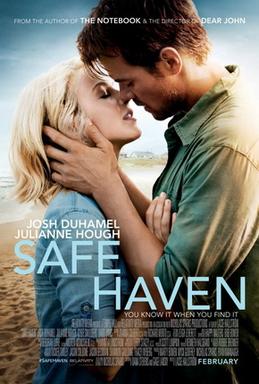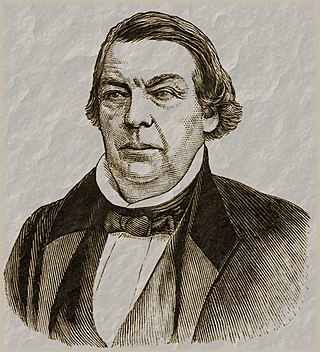
A safe house (also spelled safehouse) is a dwelling place or building whose unassuming appearance makes it an inconspicuous location where one can hide out, take shelter, or conduct clandestine activities.

A safe house (also spelled safehouse) is a dwelling place or building whose unassuming appearance makes it an inconspicuous location where one can hide out, take shelter, or conduct clandestine activities.
It may also refer to:
Typically, the significance of safe houses is kept secret from all but a limited number of people, for the safety of those hidden within them.
Many religious institutions will allow one to obtain sanctuary within one's place of worship, and some governments respect and do not violate such sanctuary.
Safe houses were an integral part of the Underground Railroad, the network of safe house locations that were used to assist slaves in escaping to the primarily northern free states in the 19th century United States. Some houses were marked with a statue of an African-American man holding a lantern, called "the Lantern Holder". [1] [2]
Safe houses also provided a refuge for victims of Nazi persecution and for escaping prisoners of war. Victims, such as Anne Frank and her family, were harbored clandestinely for extended periods of time. Other Jewish victims that were hidden from the Germans include Philip Slier and his extended family and friends. [3]

A sanctuary, in its original meaning, is a sacred place, such as a shrine. By the use of such places as a haven, by extension the term has come to be used for any place of safety. This secondary use can be categorized into human sanctuary, a safe place for people, such as a political sanctuary; and non-human sanctuary, such as an animal or plant sanctuary.
Asylum may refer to:
A safe haven is a place of safety or refuge.
A safe harbor or harbour is literally a "place of shelter and safety, esp. for ships". It is used in many contexts:
The right of asylum is an ancient juridical concept, under which people persecuted by their own rulers might be protected by another sovereign authority, such as a second country or another entity which in medieval times could offer sanctuary. This right was recognized by the Ancient Egyptians, the Greeks, and the Hebrews, from whom it was adopted into Western tradition. René Descartes fled to the Netherlands, Voltaire to England, and Thomas Hobbes to France, because each state offered protection to persecuted foreigners.
Refuge is a place or state of safety. It may also refer to a more specific meaning:

The cities of refuge were six Levitical towns in the Kingdom of Israel and the Kingdom of Judah in which the perpetrators of accidental manslaughter could claim the right of asylum. Maimonides, invoking talmudic literature, expands the city of refuge count to all 48 Levitical cities. Outside of these cities, blood vengeance against such perpetrators was allowed by law. The Bible names the six cities of refuge as follows: Golan, Ramoth, and Bosor to the east of the Jordan River; and Kedesh, Shechem, and Hebron on the western (right) side.

An animal sanctuary is a facility where animals are brought to live and to be protected for the rest of their lives. Pattrice Jones, co-founder of VINE Sanctuary defines an animal sanctuary as "a safe-enough place or relationship within the continuing hazards that menace everybody". In addition, sanctuaries are an experimental staging ground for transformative human–animal relations. There are five types of animal sanctuaries reflective of the species-belonging of the residents: 1) companion animal sanctuaries; 2) wildlife sanctuaries; 3) exotic animal sanctuaries; 4) farmed animal sanctuaries; and 5) cetacean sanctuaries.

A women's shelter, also known as a women's refuge and battered women's shelter, is a place of temporary protection and support for women escaping domestic violence and intimate partner violence of all forms. The term is also frequently used to describe a location for the same purpose that is open to people of all genders at risk.
The Sanctuary movement was a religious and political campaign in the United States that began in the early 1980s to provide safe haven for Central American refugees fleeing civil conflict. The movement was a response to federal immigration policies that made obtaining asylum difficult for Central Americans.

The United States recognizes the right of asylum for individuals seeking protections from persecution, as specified by international and federal law. People who seek protection while outside the U.S. are termed refugees, while people who seek protection from inside the U.S. are termed asylum seekers. Those who are granted asylum are termed asylees.

The Underground Railroad in Indiana was part of a larger, unofficial, and loosely-connected network of groups and individuals who aided and facilitated the escape of runaway slaves from the southern United States. The network in Indiana gradually evolved in the 1830s and 1840s, reached its peak during the 1850s, and continued until slavery was abolished throughout the United States at the end of the American Civil War in 1865. It is not known how many fugitive slaves escaped through Indiana on their journey to Michigan and Canada. An unknown number of Indiana's abolitionists, anti-slavery advocates, and people of color, as well as Quakers and other religious groups illegally operated stations along the network. Some of the network's operatives have been identified, including Levi Coffin, the best-known of Indiana's Underground Railroad leaders. In addition to shelter, network agents provided food, guidance, and, in some cases, transportation to aid the runaways.
In ancient Greece and Rome, an asylum referred to a place where people facing persecution could seek refuge. These locations were largely religious in nature, such as temples and other religious sites. A similar concept, the Cities of Refuge, existed in the ancient Levant.

Safe Haven is a 2013 American romantic fantasy drama thriller film starring Julianne Hough, Josh Duhamel and Cobie Smulders. The film marks the final film role for actor Red West. It was released theatrically in North America on February 14, 2013. The film was directed by Lasse Hallström, and is an adaptation of Nicholas Sparks' 2010 novel of the same name. The film was originally set for a February 8 release.

The Fort Ontario Emergency Refugee Shelter, also known as "Safe Haven", located in Oswego, New York was the first and only refugee center established in the United States during World War II. From 1944 to 1945, the shelter housed almost 1000 European refugees, predominantly of Jewish descent. The effort was called "Safe Haven". The refugee shelter is now the Safe Haven Museum and Education Center.

Philip "Flip" Slier was a Dutch typesetter of Jewish origin who lived in Amsterdam during the German occupation of the Netherlands in World War II. At the age of 18, he received a letter from the Jewish Council of Amsterdam—under orders from the German occupiers—that he was to report to Camp Molengoot or face arrest. He wrote 86 letters from 25 April to 14 September 1942 detailing his experiences as a forced labourer at the labour camp. Eventually he escaped to Amsterdam and lived as an onderduiker ; he frequently disguised himself and moved to different hiding locations to evade detection.

City of Asylum is a nonprofit organization based in Pittsburgh, Pennsylvania, that helps writers exiled from their countries for their controversial writing.

Bartholomew Fussell (1794–1871) was an American abolitionist who participated in the Underground Railroad by providing refuge for fugitive slaves at his safe house in Kennett Square, Pennsylvania, and other locations in Pennsylvania and Ohio. He aided an estimated 2000 slaves in escaping from bondage. He was a founding member of the American Anti-Slavery Society. Fussell was an advocate for women serving as physicians, and he influenced the founding of the Women's Medical College of Pennsylvania. He worked as a practicing physician, including providing medical services for fugitive slaves.
Indian Run is a populated place in Wilmington Township of Mercer County, Pennsylvania, named for the stream Indian Run. Indian Run had a reputation as a "safe haven" for African Americans, whether they were free or escaping slavery. White Chapel Church was established by abolitionists who broke away from a church in New Wilmington. In the 1840s, a settlement was created for freedmen called Pandenarium. John Young and others were prominent Underground Railroad conductors.
Lucius Read House, the site of the Byron Museum of History, was an Underground Railroad station along a network of stations to the Northern states and Canada. Located in Byron, Illinois, it was one of three stations in the strongly anti-slavery town from 1850 to 1862. Refugees received fresh clothing, food, shelter, and transportation to the next station. Lucius Read's stepsons and stepdaughter are notable for their roles in the events leading up to and during the American Civil War.